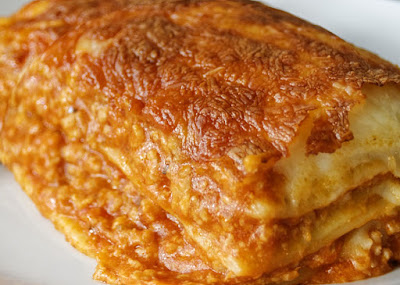What are the Macronutrients?
Nutrients are substances needed for growth, energy supply and other body functions. Macronutrients are those nutrients provide the energy needed to maintain body functions and carry out the activities of daily life. There are 3 essential macronutrients – carbohydrates, proteins and fats.
They are called macronutrients because by the body requires large amounts of them each day, unlike micronutrients (like vitamins and minerals), which the body requires in much smaller amounts.
Calcium, sodium, potassium, magnesium, and chloride ions, along with phosphorus and sulfur, are also considered macronutrients because they are required in large quantities, compared to micronutrients, such as vitamins and other minerals.
Water must be also consumed in large quantities.
While water does make up a large proportion of the total mass ingested as part of a normal diet, it does not provide any nutritional value.
There is another macronutrient in the sense that this nutrient can also be converted to energy, and that is alcohol. Too much alcohol can make you fat.
Alcohol is a calorically dense compound that can provide large amounts of bio-available energy although it is not a necessary dietary component.
These macronutrients, and particularly the quantities and the form, in which they are consumed, play a crucial role in human aging process.
Macronutrients for Weight Loss, Fitness and Bodybuilding
In sports, fitness and bodybuilding the term macros is used extensively to refer to macronutrients (protein, carbohydrates and lipids or fats). Additionally, the term carb or carbs refers to carbohydrates.
Macronutrients provide energy for your daily needs.
Fat has an energy content of 9 kcal/g (~37.7 kJ/g) and proteins and carbohydrates 4 kcal/g (~16.7 kJ/g).
Almost all diet plans are based on careful distribution of these three elements in required ratios. For example, a 2000 calorie diet could consist of 800 calories from 200 grams of protein (1 g of protein = 4 kcal), 800 calories from 200 grams of carbs (1 g carbohydrates = 4 kcal) and 400 calories from 44 grams of fats (1 g fat = 9 kcal).
Paying attention to your diet is crucial for reaching certain fitness goals. Tracking your macronutrients is more important than calorie counting.
This is called counting or tracking macros.
Tracking macros is far superior to the outdated and ineffective diet trick of counting calories when it comes to weight loss or achieving your personal fitness goals.
Keeping track of just calories as opposed to what makes up those calories can be damaging to your body despite the weight loss. With counting macros, on the other hand, you are fully responsive of what you are putting into your body and you're keeping track of very exact numbers of those nutrients.
Packaged food items with nutrition labels make your life easier when counting macros, all the information is right there. But for the fresh, whole foods you eat all the time, you'll have to do research using Google or use a reliable guidebook or macros counter.
Why Are Macronutrients Important? - 16 Macros TIPS
Proteins, fats and carbohydrates are the three macronutrients we get from our diet each being uniquely important. These are the nutrients that we need in the highest quantities to sustain life.
1) The minimal recommended intake for carbohydrate is 130 grams per day. However, individual needs vary based on activity levels, body size, and goals. Some individuals trying to aggressively lose body fat have been known to do well on 50 g per day or fewer.
2) The intake of dietary carbohydrate should also be inversely proportional to dietary fat intake. The more fat in the diet, the less carbohydrate. The more carbohydrate, the less fat.
3) Dietary fiber, while not digested and absorbed, is critical for satiety, blood fat levels, colon health, intestinal motility, and gut health.
4) To improve health and reduce the risk of chronic disease, balance out your fat intake with an ample amount of unsaturated fats and an even intake of omega-3 and omega-6 fats.
5) Amino acids form the plasma pool flow into and back out of cells for daily physiological functioning. Some amino acids are degraded each day, so daily protein intake is required.
Related Post: How to Buy Fresh Meat? What to Look for When Buying Beef with Pictures
6) Complete protein (containing all the essential amino acids in adequate amounts) each day helps prevent protein deficiency and optimize function. Complete proteins can be part of animal foods like meat, some plant foods, or a combination of different plants in a single meal.
7) While a minimum of protein is required for protein turnover, consuming higher levels of protein help promote satiety and maintain a healthy body composition and immune function.
Related Post: How to Cook Beef Liver with Flour? : Liver with Coriander Recipe
8) Carbohydrates are found in the diet as sugar, starch, and dietary fiber. These nutrients have a major role in the storage and transport of energy.
9) The final digestion products of all dietary carbohydrates are glucose, fructose, and galactose; glucose is the predominant form that reaches all cells.
10) The rate at which glucose appears in the blood is related to the speed of digestion/ absorption of the ingested carbohydrate source. Generally, the slower the better (exceptions being during and after exercise).
11) The primary subunit of fat is the fatty acid. There are three main types of fatty acids - saturated, monounsaturated, and polyunsaturated. Each has subtle chemical differences that dictate how the fatty acid behaves inside and out of the body.
12) Triglyceride, which is made up of three fatty acids bound to glycerol, is the major form of fat found in the diet (as well in storage sites in the body).
13) Excessive, saturated fats are problematic; in balance, they are just fine. However, industrially produced trans fats should be eliminated from the diet. This is possible by minimizing/eliminating processed food.
14) Proteins are critical for nearly every metabolic activity from energy provision to the creation of structural and functional components of our cells.
15) Dietary protein, which comes packaged in secondary, tertiary, and quaternary configurations, is broken down into its individual amino acids for absorption. Some of this protein is used in the intestinal cells themselves. The rest goes to the liver for processing.
16) Of the amino acids that reach the liver, about 20% (most of which are BCAAs) are shipped out. An equivalent amount (20%) is used to make protein in the liver and the majority (60%) is catabolized. The amino acids that leave the liver are used to make up the body's plasma amino acid pool.
List of Macronutrients that Provide Energy:
A) Carbohydrates. Carbohydrates are compounds made up of types of sugar. Carbohydrates are classified according to their number of sugar units: monosaccharides (such as glucose and fructose), disaccharides (such as sucrose and lactose), oligosaccharides, and polysaccharides (such as starch, glycogen, and cellulose).
Fructose
Glucose
Sucrose
Ribose
Amylose a major component of starch
Amylopectin
Maltose
Lactose
Galactose
B) Protein. Proteins are organic compounds that consist of amino acids joined by peptide bonds. Since the body cannot manufacture some of the amino acids (termed essential amino acids), the diet must supply them. Through digestion, proteins are broken down by proteases back into free amino acids.
Amino acids
Standard amino acids
Alanine
Arginine
Aspartic acid (aspartate)
Asparagine
Cysteine
Glutamic acid (glutamate)
Glutamine
Glycine
Histidine
Isoleucine (branched chain amino acid)
Leucine (branched chain amino acid)
Lysine
Methionine
Phenylalanine
Proline
Serine
Threonine
Tryptophan
Tyrosine
Valine (branched chain amino acid)
Related Post: 13 Amazing Grilling Myths That Will Make You Cook Longer, Spend More and an Instant Skxawng- (Cooking Myths Reanalyzed)
C) Fats. Fats are needed for construction and maintenance of cell membranes, to maintain a stable body temperature, and to sustain the health of skin and hair. Because the body does not manufacture certain fatty acids (termed essential fatty acids), they must be obtained through one's diet.
1) Saturated fats
Butyric acid (C4)
Caproic acid (C6)
Caprylic acid (C8)
Capric acid (C10)
Lauric acid (C12)
Myristic acid (C14)
Pentadecanoic acid (C15)
Palmitic acid (C16)
Margaric acid (C17)
Stearic acid (C18)
Arachidic acid (C20)
Behenic acid (C22)
Lignoceric acid (C24)
Cerotic acid (C26)
2) Monounsaturated fats
Myristol
Pentadecenoic
Palmitoyl
Heptadecenoic
Oleic acid
Eicosen
Erucic acid
Nervonic acid
3) Polyunsaturated fats
Linoleic acid (LA) - an essential fatty acid
a-Linolenic acid (ALA) - an essential fatty acid
Stearidonic acid (SDA)
Arachidonic acid (ETA)
Timnodonic acid (EPA)
Clupanodonic acid (DPA)
Cervonic acid (DHA)
4) Essential fatty acids
These 2 essential fatty acids are the starting point for other important omega-acids (e.g. DHA, EPA)
a-Linolenic acid ALA (18:3) Omega-3 fatty acid
Linoleic acid LA (18:2) Omega-6 fatty acid
List of Macronutrients that Do Not Provide Energy:
D) Water
It provides the medium in which all metabolic processes proceed. As such it is necessary for the absorption of macronutrients, but it provides no nutritional value in and of itself.
Water often contains naturally occurring micronutrients such as calcium and salts, and others can be introduced to the water supply such as chlorine and fluoride for various purposes such as sanitation or dental health.
E) Fiber
How to Start a High Fiber Diet? - FAST, EASY and EFFECTIVE
Dietary fiber or roughage is the indigestible portion of food derived from plants. It has two main components:
Soluble fiber, which dissolves in water, is readily fermented in the colon into gases and physiologically active by-products, and can be prebiotic and viscous. This delays gastric emptying which, in humans, can result in an extended feeling of fullness.
Insoluble fiber, which does not dissolve in water, is metabolically inert and provides bulking, or it can be fermented in the colon. Bulking fibers absorb water as they move through the digestive system, easing defecation.
REFERENCES:
Matt Dustin. 2017. The Everything Guide to Macronutrients: The Flexible Eating Plan for Losing Fat and Getting Lean. Everything. ISBN-13: 978-1507204160
William J. Walsh. 2014. Nutrient Power: Heal Your Biochemistry and Heal Your Brain. Skyhorse Publishing. ISBN-13: 978-1626361287
Related Youtube Video: How to Track Your Macros an Easy Guide




No comments:
Post a Comment